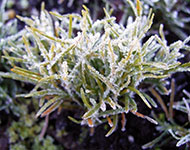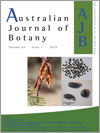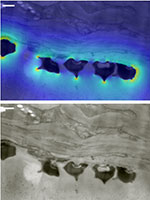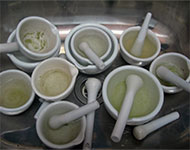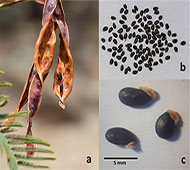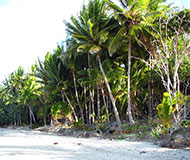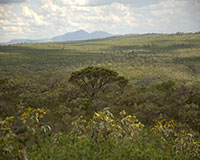Australian Journal of Botany
Volume 67
Number 1 2019
Cryopreservation is currently the only viable alternative for long-term biosecure germplasm storage of species that cannot be seed-banked effectively. A wide range of plant tissues and organs can be cryopreserved. However, there is wide variation in cryo-capability among species, progress has been made in developing a more holistic understanding of the stresses that cryopreservation imposes on plant germplasm, and in developing novel cryopreservation protocols to counteract them.
Orbicules are small bodies coating the interior of the anther locule that present the same reactions than the exine of pollen grains. Although many speculations were made trying to understand the orbicules role, none of them could be confirmed. We found that anemophilous and ‘buzz pollination’ species have microechinate orbicules and that the anther loculus surface coated by pointed structures increases the repulsion force of the pollen grains. This is an advantage when pollen is released by shaking the anther.
Genetic study suggests that our current abundance estimates on a rare native species should be revised downward some 6-fold due to clonal root suckering. Low numbers of genetic individuals, combined with an out crossing breeding system will likely further push populations, particularly very small populations, to decline. Future conservation management may need to include pollen, seed or whole-plant translocation and/or changes to fire timing in order to optimise its chances of future sexual reproductive success.
Identifying attributes that facilitate naturalised species to become invasive will increase successful management. Acacia dealbata is currently undergoing a lag phase in mountains of central Argentina. By assessing functional strategies of this species, we suggest that the physical seed dormancy, large seed bank, broad temperature and light germination requirements, and fast-growing seedlings make this species a potential invader in this mountain system. We conclude that intervention activities undertaken in the lag phase will be key in establishing efficient and low cost management and control strategies for this species.
The year of European settlement in 1788 is used here to define the ‘native’ and ‘naturalised’ flora of the Australian continent. Using this definition the origin of only 27 species remains ambiguous. It is argued that this date is meaningful as a biogeographic watershed and because of the weight of evidence from early botanical collections provides a relatively unambiguous means of defining the ‘native’ flora of the Australian continent.
Edaphic gradients can explain plant species distribution on a local scale, but few studies have evaluated the individual responses of species to such gradients. We collected data on species and soils in open savannic and forest formations, aiming to evaluate the importance of edaphic factors on the distribution of plant species in tropical habitats. Results showed that soil largely regulates the distribution of plant species in tropical habitats, yet other factors that were not investigated may have had an effect on several studied species.
 , Eric Bunn, Catherine A. Offord, Karen D. Sommerville and Ricardo L. Mancera
, Eric Bunn, Catherine A. Offord, Karen D. Sommerville and Ricardo L. Mancera
